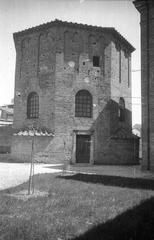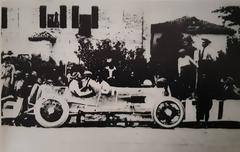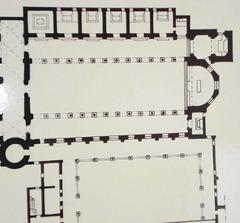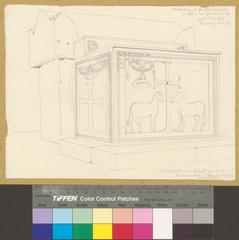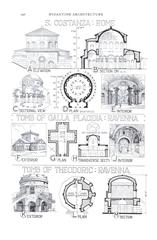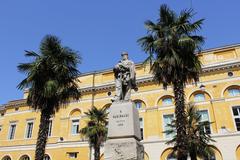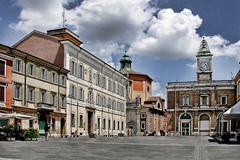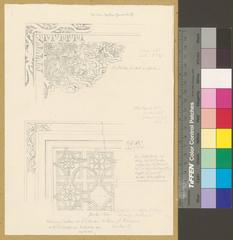Torre Civica Ravenna: Visiting Hours, Tickets, and Complete Historical Guide
Date: 14/06/2025
Introduction
In the heart of Ravenna’s historic center, the Torre Civica (Civic Tower) rises as a powerful symbol of the city’s medieval heritage and civic pride. This iconic tower, with origins stretching back to the 12th and 13th centuries, bears witness to centuries of political intrigue, architectural evolution, and cultural transformation. Commissioned by prominent noble families and later adapted for public use, the Torre Civica has served as a watchtower, bell tower, and rallying point for the community. Its robust masonry, Romanesque features, and embedded ancient reliefs provide a unique link between Roman, Byzantine, and medieval influences. Today, while access to the interior is often restricted due to ongoing preservation efforts, the Torre Civica continues to captivate visitors with its imposing silhouette adjacent to Piazza del Popolo. This comprehensive guide covers visiting hours, ticketing, accessibility, architectural highlights, cultural legacy, and practical travel tips, making it essential reading for anyone seeking to experience Ravenna’s rich blend of secular and religious heritage (Comune di Ravenna; turismo.ra.it; TukTuk Travel Mag).
Table of Contents
- Introduction
- Historical Origins & Construction
- Architectural Features & Decorative Elements
- Torre Civica’s Role in Ravenna’s Urban Development
- Symbolism, Civic Functions & Cultural Significance
- Visiting Torre Civica: Hours, Tickets & Accessibility
- Travel Tips & Nearby Attractions
- Preservation, Restoration & Modern Relevance
- Frequently Asked Questions (FAQ)
- Visuals, Media & Further Resources
- Conclusion
Historical Origins & Construction
Foundation and Evolution
The Torre Civica’s history is a testament to Ravenna’s layered past. The lower section of the tower may date as far back as the 6th century, suggesting its foundations could have been built atop earlier Roman or Byzantine structures—a common practice in Ravenna. The upper levels, constructed in the 12th and 13th centuries, reflect the era when powerful families, such as the Da Polenta, erected “case-torri” (tower houses) as both defensive residences and status symbols (turismo.ra.it; TukTuk Travel Mag).
Originally exceeding 39 meters in height, the tower’s uppermost section was dismantled in 2000 due to structural concerns, reducing its height to about 26 meters (turismo.ra.it).
Architectural Features & Decorative Elements
Structure and Materials
The Torre Civica is constructed from a blend of large stone blocks (likely spolia from Roman or Byzantine buildings) in its lower section and smaller, more regular medieval bricks above. Its square base, tapering silhouette, and narrow slit windows (embrasures) exemplify the Romanesque style and the defensive requirements of the time (turismo.ra.it).
Embedded Reliefs and Artistic Details
The tower’s exterior is adorned with ancient marble reliefs. Most notably, a 3rd-century Roman bas-relief of a horseman and a heavily worn female head are set into the masonry. These relics not only enhance the tower’s historical depth but are also referenced in local sayings and European literature—such as Cervantes’ “Don Quixote,” which mentions the proverb “Zarchê Mariola par Ravêna” (turismo.ra.it).
Torre Civica’s Role in Ravenna’s Urban Development
From Private Stronghold to Civic Symbol
The shift from private to civic ownership marked a pivotal moment for the Torre Civica. Unlike many other towers demolished by papal edict in the late 13th century, the Civic Tower was retained for public use. Its proximity to the then-flowing Padenna River and the bustling Piazza del Popolo positioned it as a strategic lookout and a central fixture in Ravenna’s evolving urban landscape (turismo.ra.it).
Symbolism, Civic Functions & Cultural Significance
Civic Identity and Community Life
The Torre Civica is more than an architectural landmark—it is a potent symbol of Ravenna’s communal resilience and autonomy. Historically, its bells (known as “i bott”) summoned citizens to council, signaled curfew, warned of emergencies, and marked public executions. The tower thus became integral to the rhythm and safety of city life (turismo.ra.it; Comune di Ravenna).
Representation in Art and Literature
The Torre Civica’s imposing form inspired artists, writers, and historians. It is frequently depicted alongside Ravenna’s religious monuments, emphasizing the city’s intertwined secular and spiritual legacies. Notably, Lord Byron referenced the tower during his stay in Ravenna, and its image endures in local art and literature (Byron in Ravenna).
Visiting Torre Civica: Hours, Tickets & Accessibility
Visiting Hours and Tickets
- Current Status: As of 2025, the Torre Civica’s interior is closed to the public due to ongoing stabilization and restoration work. The tower can be admired externally from Piazza del Popolo and surrounding pedestrian zones at any time (turismo.ra.it).
- Tickets: There is no admission fee to view the tower from outside. Tickets are not currently required.
- Guided Tours: While no interior tours are available, many local walking tours include the Torre Civica’s exterior and historical context. Check with the Ravenna tourism office or authorized tour providers for updated information (Ravenna Tourism).
Accessibility
- The surrounding area is pedestrian-friendly, with paved pathways and ramps suitable for visitors with mobility impairments.
- The tower itself is not wheelchair accessible inside, but exterior access is unobstructed.
Travel Tips & Nearby Attractions
Getting There
- By Train: Ravenna train station is a 10–15 minute walk from the tower. Follow Via Farini towards the city center (The Geographical Cure).
- By Car: Nearby parking is available at Piazza Baracca, Piazza Kennedy, and Piazza Aldo Moro.
Best Times to Visit
- Early mornings and late afternoons are ideal for avoiding crowds and enjoying favorable lighting for photography.
- Spring (April–June) and autumn (September–October) offer mild weather and fewer tourists (HikersBay).
Nearby Attractions
- Basilica di San Vitale: Renowned for its mosaics, just a short walk away.
- Mausoleum of Galla Placidia: UNESCO-listed, famed for early Christian art.
- Piazza del Popolo: The city’s vibrant main square, ideal for people-watching and photos.
- Local Dining: Enjoy traditional cuisine at La Gardela or Ca de Ven (The Geographical Cure; The Crazy Tourist).
Preservation, Restoration & Modern Relevance
Structural Challenges and Interventions
The Torre Civica’s noticeable tilt (earning it the nickname “Torre Pendente”) is due to subsidence of Ravenna’s soft soils. Recent decades have seen the removal and preservation of embedded reliefs, the dismantling of the unstable upper section, and ongoing scaffolding to ensure stability (turismo.ra.it). These efforts are part of broader heritage management practices, involving local authorities, cultural associations, and educational outreach.
Community Engagement
Local schools and cultural organizations frequently include the tower in heritage trails and educational programs, fostering community pride and stewardship (Ravenna Heritage Trails).
Frequently Asked Questions (FAQ)
Q: Can I enter the Torre Civica?
A: No, interior access is currently closed due to preservation and stabilization work.
Q: Is there an entrance fee?
A: No, viewing the tower from outside is free.
Q: Are guided tours offered?
A: While the interior is closed, many city walking tours include the tower’s history and exterior.
Q: Is the tower accessible to people with disabilities?
A: The area around the tower is accessible, but there is no interior access for wheelchair users.
Q: When are the busiest times to visit?
A: Midday and weekends, especially during the Ravenna Festival (May–July), draw larger crowds.
Visuals, Media & Further Resources
- Explore high-resolution images and virtual tours via the Ravenna Tourism portal.
- Recommended photos: the leaning tower’s silhouette, embedded Roman reliefs, panoramic views from Piazza del Popolo.
- For updates, check HikersBay and the official Ravenna tourism website.
Conclusion
The Torre Civica is much more than a medieval tower; it embodies Ravenna’s civic spirit, architectural ingenuity, and layered history. Whether viewed as a fortified residence, a symbol of municipal authority, or a unique leaning landmark, the tower remains essential to understanding Ravenna’s urban and cultural fabric. Combine your visit with nearby UNESCO sites and the vibrant Piazza del Popolo for a truly immersive experience. For the latest updates on accessibility, events, and guided tours, consult official tourism resources and enhance your exploration with digital tools like the Audiala app.
References and Further Reading
- Comune di Ravenna, 2025, Ravenna Tourism
- turismo.ra.it, 2025, Cultural and Historical Buildings - Torre Civica
- TukTuk Travel Mag, 2025, What to Do and What to See in Ravenna, Italy
- Ravenna Tourism, 2025, UNESCO World Heritage
- The Geographical Cure, 2025, One Day in Ravenna Itinerary
- HikersBay, Ravenna Tourist Information
- The Crazy Tourist, 15 Things to Do in Ravenna
